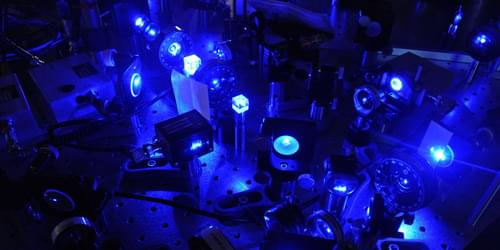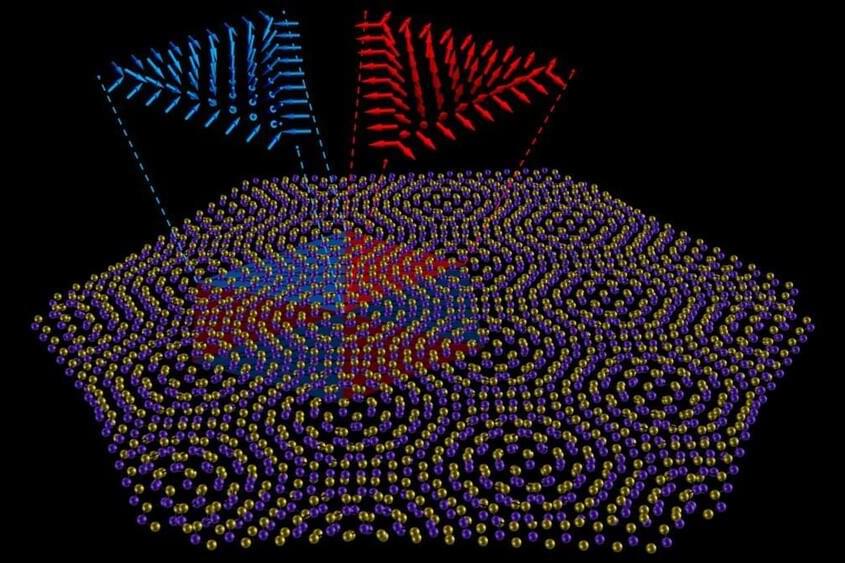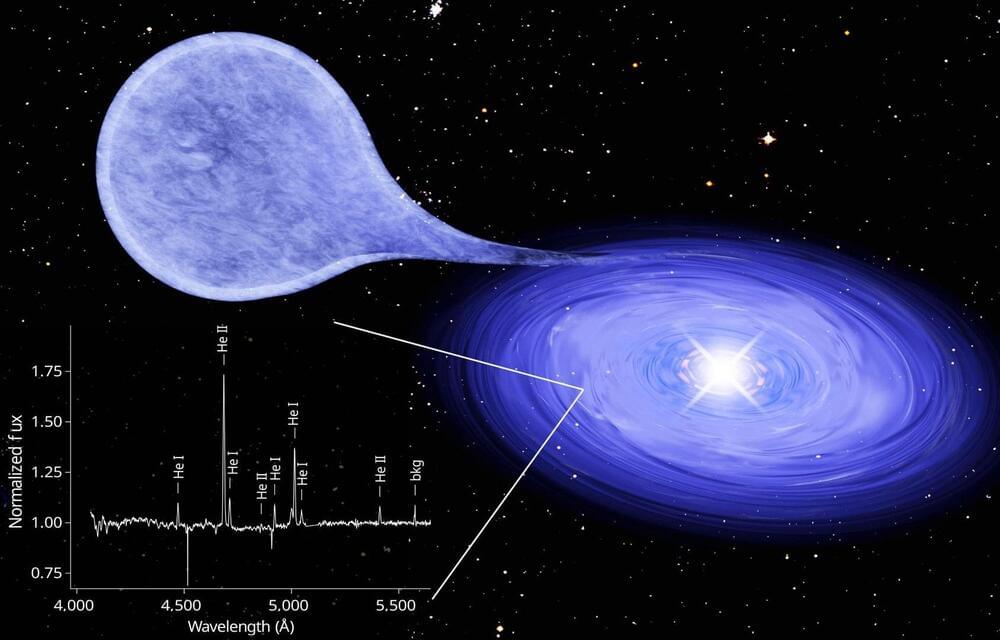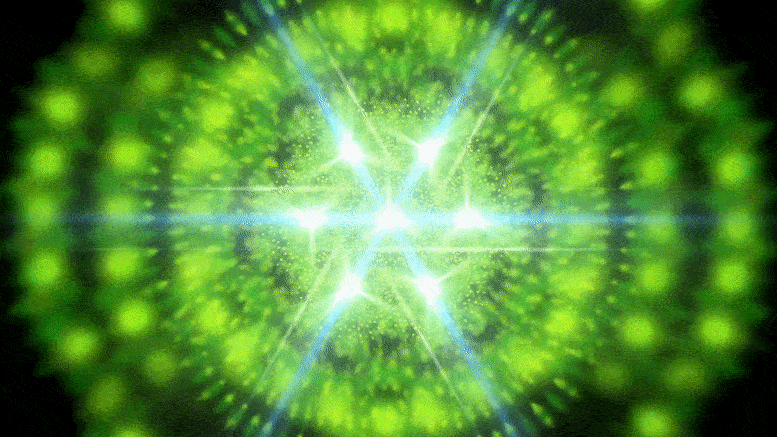Researchers have attained a 100-fold increase in the accuracy of a molecular clock that could serve as a terahertz-frequency standard and as a platform for investigating new physics.


Physics-Astronomy: Home of the best science(focusing physics, astronomy) and technology news since 2012. Keep up with the latest news via email or social media. We are curious about the Universe, are you?
Echopraxia is a book set in one of the most interesting sci-fi universes that I have covered on this channel. It is technically a sequel to Blindsight, but it is not necessary that you read Blindsight to understand Echopraxia is set in the late 21 century. About 14 years after man’s first contact with alien life.
This book brings up one of the most interesting concepts I’ve ever encountered in any sci-fi book ever. And that is the concept of the “Digital Universe” and God as a Virus. Now this is a concept that comes from the field of digital physics, which keep in mind is all theoretical. It is based on the premise that the universe is pure mathematics at its base, every event that occurs can be thought of as a kind of computation. This could mean that the universe is a simulation, but that is not necessary for the idea to work.
The universe could itself be a giant computer, physics would be its software and matter, its hardware. Every movement of an electron would be a calculation in that vast supercomputer. In some models of the Digital Universe, matter itself is merely an instantiation of numbers.
Get Echopraxia: https://www.amazon.com/Echopraxia-Firefall-Book-Peter-Watts-…sr=8-1
Get blindsight: https://www.amazon.com/Blindsight-Peter-Watts-audiobook/dp/B…sr=8-1
My other videos on this series: https://www.youtube.com/playlist?list=PLRXGGVBzHLUcF9_xuNSF8c-NPM29qXxSj.
Art: https://docs.google.com/document/d/1f09FgJsBbvvS1AYIp19fplHG…p=sharing.

Cambridge researchers have discovered a new topological phase in a two-dimensional system, which could be used as a new platform for exploring topological physics in nanoscale devices.
Two-dimensional materials such as graphene have served as a playground for the experimental discovery and theoretical understanding of a wide range of phenomena in physics and materials science. Beyond graphene, there are a large number 2D materials, all with different physical properties. This is promising for potential applications in nanotechnology, where a wide range of functionality can be achieved in devices by using different 2D materials or stacking combinations of different layers.
It was recently discovered that in materials such as hexagonal boron nitride (hBN), which are less symmetric than graphene, ferroelectricity occurs when one layer slides over the other and breaks a symmetry. Ferroelectricity is the switching of a material’s electric dipole moment with an electric field, which is a useful property for information processing and memory storage.

The first possible scenarios for life’s origin is that life may simply have been a miracle. It may have been a divine act of intervention. If so, then the origin of life is not a scientific question. There is no experiment one can propose or an observation one can make.
Yet, it’s equally possible that the origin of life was an event that’s fully consistent with the known laws of physics and chemistry, but an extremely improbable, perhaps unique event; perhaps an event that only took place on Earth. Once again, it’s really not amenable to scientific study, because we can’t go into the laboratory and study a unique event.
And then there is a third possibility, and that’s that life is an inevitable consequence of chemistry. That, given an appropriate environment—an appropriate planet with water, for example—and sufficient time, that life always arises.
Tapping The Power Of The Stars — Dr. Andrea Kritcher Ph.D., Lawrence Livermore National Laboratory, U.S. Department of Energy.
Dr. Andrea (Annie) Kritcher, Ph.D. is a nuclear engineer and physicist who works at the Lawrence Livermore National Laboratory (https://www.llnl.gov/). She is the design lead of the HYBRID-E capsule technology within Lawrence Livermore’s Inertial Confinement Fusion (ICF) program, and is a member of the ICF leadership team and lead designer for shot N210808, at their National Ignition Facility, a recent experiment that heralded a significant step towards a fusion break-even target. She was elected Fellow of the American Physical Society in 2022.
Dr. Kritcher was first employed at Lawrence Livermore as a summer intern in 2004, as an LLNL Lawrence Scholar during her time at UC Berkeley, where she earned a master’s degree and doctorate in nuclear engineering, and as a Lawrence postdoctoral fellow in 2009 following completion of her Ph.D. During her postdoctoral appointment she explored using X-rays to measure the properties of warm and hot dense matter (plasma), and measuring how nuclei interact with dense plasma.
In 2012, Dr. Kritcher became a member of scientific staff and now serves as team lead for integrated implosion modeling and is a group leader within the design physics division at LLNL.
Lawrence Livermore National Laboratory (LLNL) is a federally funded research and development center in Livermore, California, United States. Originally established in 1952, the laboratory now is sponsored by the United States Department of Energy. Its principal responsibility is ensuring the safety, security and reliability of the nation’s nuclear weapons through the application of advanced science, engineering, and technology. The laboratory also applies its special expertise and multidisciplinary capabilities towards preventing the proliferation and use of weapons of mass destruction, bolstering homeland security, and solving other nationally important problems, including energy and environmental needs, scientific research and outreach, and economic competitiveness.

Primordial black holes older than the big bang could rewrite cosmology by providing evidence for a previous universe. It’s a wild idea, but some physicists think we’ve got a chance of finding them.
By Bernard Carr

Basically we are nearing if not already in the age of infinity. What this means is that full automation can be realized imagine not needing really to work to survive bit we could thrive and work on harder things like new innovative things. Basically we could automate all work so we could automate the planet to get to year million or year infinity maybe even days or months once realized full automation could lead to more even for physics where one could finally find the theory of everything or even master algorithm. 😀 Really in the age of infinity anything could be possible from solving impossible problems to nearly anything.
These assistants won’t just ease the workload, they’ll unleash a wave of entrepreneurship.

A white dwarf star can explode as a supernova when its mass exceeds the limit of about 1.4 solar masses. A team led by the Max Planck Institute for Extraterrestrial Physics (MPE) in Garching and involving the University of Bonn has now found a binary star system in which matter flows onto the white dwarf from its companion.
The system was found due to bright, so-called super-soft X-rays, which originate in the nuclear fusion of the overflowed gas near the surface of the white dwarf. The unusual thing about this source is that it is helium and not hydrogen that overflows and burns. The measured luminosity suggests that the mass of the white dwarf is growing more slowly than previously thought possible, which may help to understand the number of supernovae caused by exploding white dwarfs. The results have been published in the journal Nature.
Exploding white dwarfs are not only considered the main source of iron in the universe, they are also an important tool for cosmology. As so-called Type Ia supernovae (SN Ia), they all become roughly equally bright, allowing astrophysics a precise determination of the distance of their host galaxies.

A team of Rutgers University scientists dedicated to pinpointing the primordial origins of metabolism – a set of core chemical reactions that first powered life on Earth – has identified part of a protein that could provide scientists clues to detecting planets on the verge of producing life.
The research, published on March 10 in the journal Science Advances.
<em>Science Advances</em> is a peer-reviewed, open-access scientific journal that is published by the American Association for the Advancement of Science (AAAS). It was launched in 2015 and covers a wide range of topics in the natural sciences, including biology, chemistry, earth and environmental sciences, materials science, and physics.